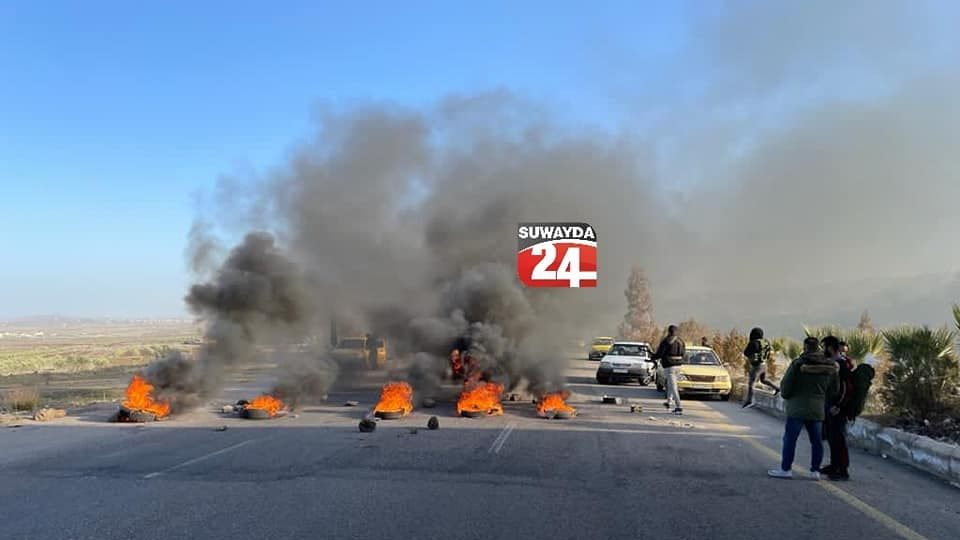It has not been a quiet week in Suweida. In Syria’s Druze-majority, agricultural and southernmost province, massive protests were held after the cash-strapped Syrian regime decided to lift subsidies for hundreds of thousands of families.
Two weeks ago, the Fahd Forces faction operating in Suweida and angry civilians blocked the Damascus-Suweida highway near the Mardak Bridge with burning tires “in protest against the government’s decision to lift partial subsidies for citizens,” the Suwayda 24 news website reported, according to the pro-opposition Baladi News. Protestors added in a statement, distributed by civil activists in Suweida, stressed that “the anger of the street today, should not be for the return of subsidies only. The repeal of the decision if it happens, does not amount to solving the many problems that existed before it. The streets were already full because of them.” Protests decried the corruption of the Syrian government and its cronies.
Resolution 2254
Unrest escalated throughout the next week, with protesters raising daring slogans such as “the establishment of a country for ‘all Syrians’ and implementing UN resolution 2254 (which calls for a political transition in the country),” according to the pan-Arab Asharq al-Awsat. Protesters called on all Syrians to join the protest and for a general strike.
Warry of such movements, the Syrian regime sent military reinforcements to Suweida, according to the Kurdish agency North Press. Reinforcements arrived from Damascus passing through the Shahba checkpoint north of Suweida.
The week after that, Iranian groups also joined the Syrian army in the south, Asharq al-Awsast reports. The pan-Arab website quoted sources, saying that huge convoys from the Popular Mobilization Forces, Hezbollah, Fatemiyoun Brigade, Harakat Al-Nujaba, and Asa’ib Ahl al-Haq (AAH) militias set off from the countryside of Raqqa, Deir-ez-Zor, and the Palmyra desert in Homs’ countryside. They headed towards the governorates of Suweida, Daraa, and Damascus countryside. They included 4×4s, as well as medium and heavy weapons.
However, last Tuesday, protests were suspended, as indirect negotiations between the Damascus government and civil and religious leaders from Suweida, Asharq al-Awsat said. “Organizers of popular movements in Suweida suspended demonstrations after holding a massive protest in the provincial city, al-Suweida, on Friday,” As Suwayda 24 Network Director Rayan Maarouf told the news website. Damascus, however, made it clear that the bad socio-economic conditions Syria is experiencing are nationwide and not limited to Suweida, and that they are due to factors it considers out of its control, such as U.S. sanctions and the control of oil resources by the Syrian Democratic Forces.
Recently, as calls for renewed protests multiplied, the spiritual leader of the Druze community in Israel met with the Russian Deputy Minister of Foreign Affairs, Mikhail Bogdanov, and the Russian envoy for Syria Alexander Lavrentiev, to convey the demands of the protesters, according to North Press.
Paul McLoughlin, a news editor at the pan-Arab website al-Araby al-Jadeed, has claimed in an op-ed that the Sweida protests were particularly worrying for the Syrian regime. They were seen as a sign of a weakened loyalty by the Druze and their clergy to Assad. The Syrian regime president has counted throughout the war on the support of religious minorities (Christians, Druze, and of course Alawites), claiming that the Syrian opposition is a Sunni Islamist movement that wants to repress them. These protests also reflect the deep problems and challenges the regime has to face, such as dire economic conditions, conscription, and melting foreign exchange reserves.


